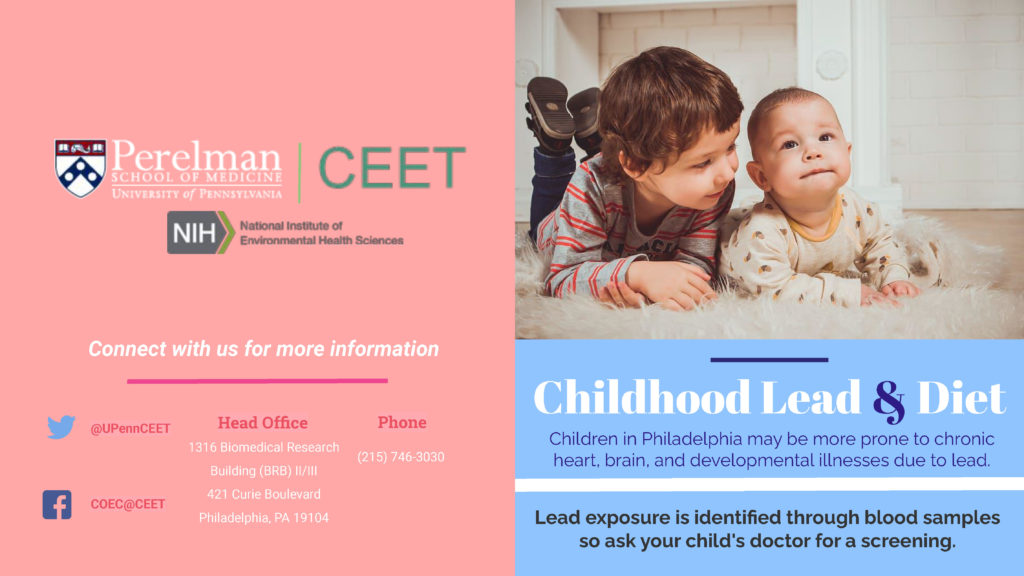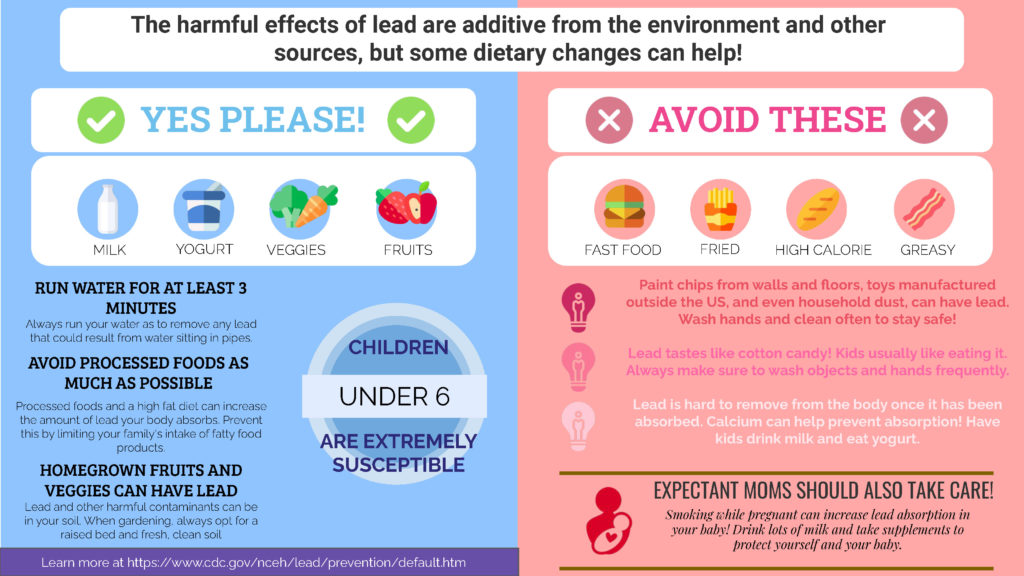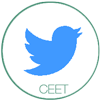My name is Swapnika Alahari and I am from Dallas, Texas originally; however, now I live in Miami, FL and will be a rising senior at the University of Miami studying Microbiology and Immunology. This summer, I tackled the effects of lead toxicity in community children under the mentorship of Dr. Jianghong Liu. STEER has been my first research experience in environmental health.
What is your summer research project?
In modern society, the effects of environmental hazards are being studied more in an effort to increase regulation. Specifically, in Philadelphia lead toxicity has been a huge issue for many populations across various socioeconomic, cultural, and demographic boundaries. The pervasive nature of lead in paint, piping, household dust, and other sources makes it hard to eliminate completely; however, as research continues, it becomes increasingly apparent that lead is toxic even at very low levels (≤5μg/dL). Furthermore, once in the body, lead is difficult to remove. According to the Centers for Disease Control and Prevention, hospitalization and chelation therapy, designed to eliminate lead through insoluble complexes, is only available at lead levels greater than 45μg/dL – well above the toxic limit that research shows. This preexisting information set the tone for my research this summer. The aims I had were twofold: establish preventative factors for lead exposure and show the effects of low-lead exposure on children.
Using cohort samples from Jintan, China, we conducted a study into the effects of children’s dietary patterns on blood lead levels and helped identify protective food factors in dietary lead exposure. I conducted a literature synthesis and review on why our ‘healthy’ dietary pattern, consisting of fruits, vegetables, milk, and cereals, was inversely correlated with blood lead levels; while the ‘snack and drink’ dietary pattern, consisting of fast food, sweets, and soft drinks, was positively correlated with blood lead levels. In creating presentations and a manuscript for this project, I discussed the synergy between various dietary factors and the in vitro implications they have on lead absorption.
Secondly, using data from the same cohort of adolescents in a different study, we identified the correlation between low-level environmental lead exposure and children’s aggressive behavior. Specifically, we looked at the impact of gender on types of aggression and lead levels on types of aggression. In creating a manuscript for this project, I looked to explain the reasoning behind why boys showed greater proactive and total aggression compared to girls and why lower-lead levels impacted boys aggression at greater levels.
What are the implications of your research?
While I continue to work on the scientific manuscripts for both projects, these pieces of literature will add to the growing evidence that the acceptable standard level of lead in children needs to be dropped. To this end, I have worked to create a brochure that details the impacts of dietary factors and patterns on blood lead levels. Specifically, I hope to make this pertinent information accessible to all populations in Philadelphia. Through the Perelman School of Medicine, Center of Excellence in Environmental Toxicology, and the National Institutes of Health, I have been able to make an informational guide that is now available to print and use across Philly. In doing this, I look to make the lay public aware of issues that can continue to affect them and how to practice healthy habits.


What new skills have you gained through your research?
While previously I focused mainly on wet lab benchwork and molecular pathways, this summer I was introduced to the world of epidemiology and the dynamic impact it has on human health. Honestly, I was enamored with this field of study right off the bat and I look to immerse myself in further translational work moving forward. This introduction to epidemiology and the unique time period we are currently in makes it easy for me to learn new skills that are applicable virtually. As such, I really expanded on my skills in scholarly writing, literature synthesis, outreach and accessibility, and understanding how to combat environmental injustice. These are tools I look to take forward in my practice of medicine and public policy.






